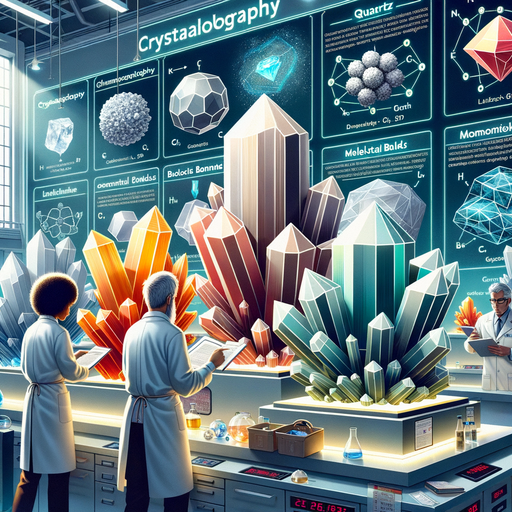Crystal Structures Unveiled
An in-depth exploration into the unique structures of crystals and how they shape their properties.

Crystal Structures Unveiled
Introduction
Crystals are not just beautiful objects that dazzle our eyes with their mesmerizing shapes and colors. They are remarkable structures that have fascinated scientists for centuries. Understanding the structure of a crystal can reveal a lot about its physical characteristics and behavior.
Crystal Structures and Their Complexities
A crystal’s structure is defined by a pattern of atoms or molecules repeated in three dimensions. The type of elements and the way they bond together, as well as the conditions under which they form, greatly affect the crystal’s final structure.
Common Crystal Structures
Crystal structures can be broadly divided into seven categories, based on the arrangement of their atoms. These are: cubic, tetragonal, orthorhombic, hexagonal, trigonal, triclinic, and monoclinic.
| Crystal System | Axial Characteristics |
|---|---|
| Cubic | Three equal axes at right angles |
| Tetragonal | Two equal, one unequal axis at right angles |
| Orthorhombic | Three unequal axes at right angles |
| Hexagonal | Four axes, three equal in one plane and one unequal |
| Trigonal | Three equal axes not at right angles |
| Triclinic | Three unequal axes not at right angles |
| Monoclinic | Three unequal axes, two not at right angles |
Each of these structures results in unique physical properties for the crystal in question.
Impact of Crystal Structures on Properties
The structure of a crystal determines many of its properties, including its hardness, cleavage, the way it transmits light, and even its color. For instance, diamond and graphite are both forms of carbon, but they look and behave very differently due to their distinct crystal structures.
“In the world of crystals, structure is destiny.” - Anonymous.
How Do We Study Crystal Structures?
Scientists use several techniques to study crystal structures. One of the most common is X-ray crystallography, a method that involves shining X-rays on a crystal and studying the pattern of rays that bounce off. This provides a ‘map’ of the positions of the atoms within the crystal structure.
External Reference
For further reading, check out this article that provides detailed information about different crystal systems and their properties.
Conclusion
Understanding the structure of crystals is not just a fascinating scientific endeavor; it is key to harnessing their unique properties. Whether it’s using crystals in technology, appreciating their beauty in jewelry, or studying the geological processes that form our planet, crystal structures hold the key to a deeper understanding. The world of crystals is intricate and complex, but with every structure we unveil, we unlock a piece of nature’s extraordinary puzzle.